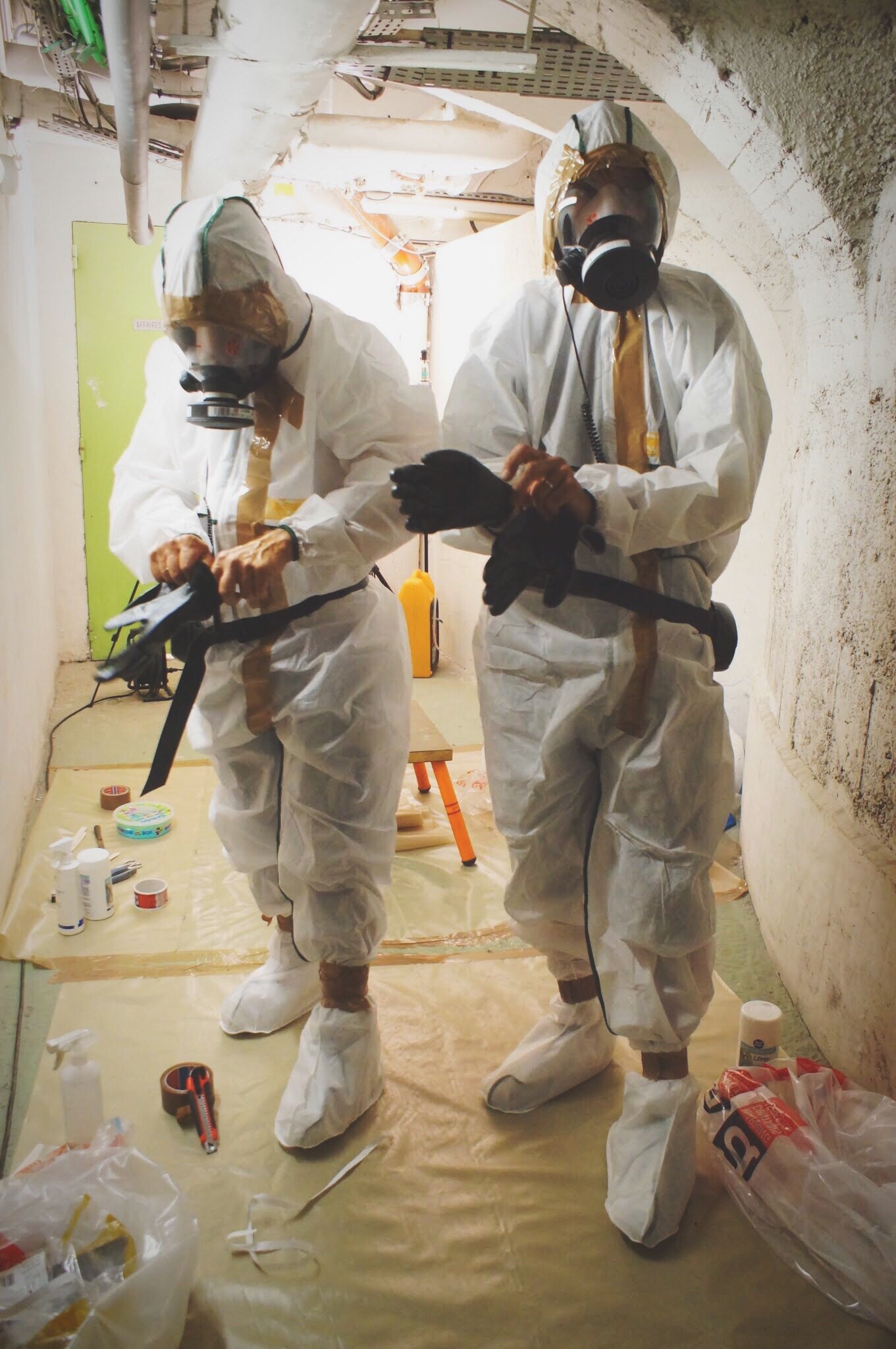When planning a painting project that involves confined environments, the specialists should take into account a few essentials. This blog post presents the most important concerns industrial painting contractors must address before starting work in a confined space.

Limited Entry and Exit
In industrial environments, there are many paint jobs that involve limited means of entry and exit, such as silos, storage tanks, smokestacks, water towers, and pipelines. To control and mitigate the specific hazards associated with restricted means of entry and exist, it’s essential to:
- establish if temporary ladders or working platforms will limit the capacity of the means of egress or reduce the number of exits;
- determine if permanent elements (e.g. stairs, doors, etc.) would interfere with the worker’s ability to escape or be rescued in an emergency;
- determine if the distance that a worker must travel in order to reach a point of safety is a an essential determinant of safety measures and procedures.
Hazardous Atmospheres
When painting a confined space, coating products, industrial solvents, and other materials may emanate vapors that can reach dangerous levels. This can be harmful to workers. To protect against these hazards, air quality must be examined every time a worker enters the space.
Since some toxic vapors are odorless and colorless, they can only be detected with special multi-gas detection devices. According to OSHA, these devices should be used to test for flammable gases, oxygen levels, and toxic contaminants that may be present in a confined environment. It’s also necessary that the industrial painters, who spend prolonged periods of time painting confined spaces, wear adequate PPE, including respirators.
As a complementary measure, careful consideration must be given to air circulation. Twenty complete cycles of fresh air per hour is an acceptable practice during painting operations in confined areas.
Another important aspect is the risk of fire or explosion, which is extremely high in confined environments where flammable vapors tend to accumulate. However, a source of ignition and sufficient amount of oxygen are two other factors required for vapors to ignite and cause a fire or explosion.
Oxygen Deficient and Oxygen Enriched Atmospheres
An environment is oxygen deficient when the concentration of oxygen is below 19.5%, which is 1.4% lower than the concentration of oxygen in the natural environment. In confined areas like silos, storage tanks, and process plant vessels, specific painting, welding, and/or cutting operations combined with poor air ventilation can create an oxygen deficient atmosphere in a relatively short period of time.
Conversely, too much oxygen in the atmosphere can cause flammable materials to ignite easier and burn faster. Therefore, pure oxygen should never be used as a replacement for fresh, breathable air to ventilate confined areas. To reduce the risk of fires or explosions, compressed tanks should never be placed or stored in confined spaces.
Physical Hazards
The most common physical hazards in confined environments include access difficulty, equipment that could start unexpectedly, falling objects, excessive noise, inadequate lighting, and extreme temperatures. To ensure that workers can accomplish their tasks successfully and exit confined spaces safely, all physical hazards must be eliminated.
As well, the possibility of using other methods to carry out painting operations should be considered before any work commences. If there aren’t any alternative methods, it’s critical to establish safe work practices covering all the phases of the painting project in order to ensure everyone’s safety.
Confined spaces often require a fresh coat of paint both inside and outside. That’s where Performance Painting Contractors comes in.
With almost two decades of experience working in hazardous environments, our industrial painting crews have the necessary expertise, confined space certifications, and safety plans to make any painting project a success. For more information about our confined space painting services, contact our friendly professionals today!
{{cta(‘9de02520-f11a-488c-8c31-5b289e42101b’)}}






